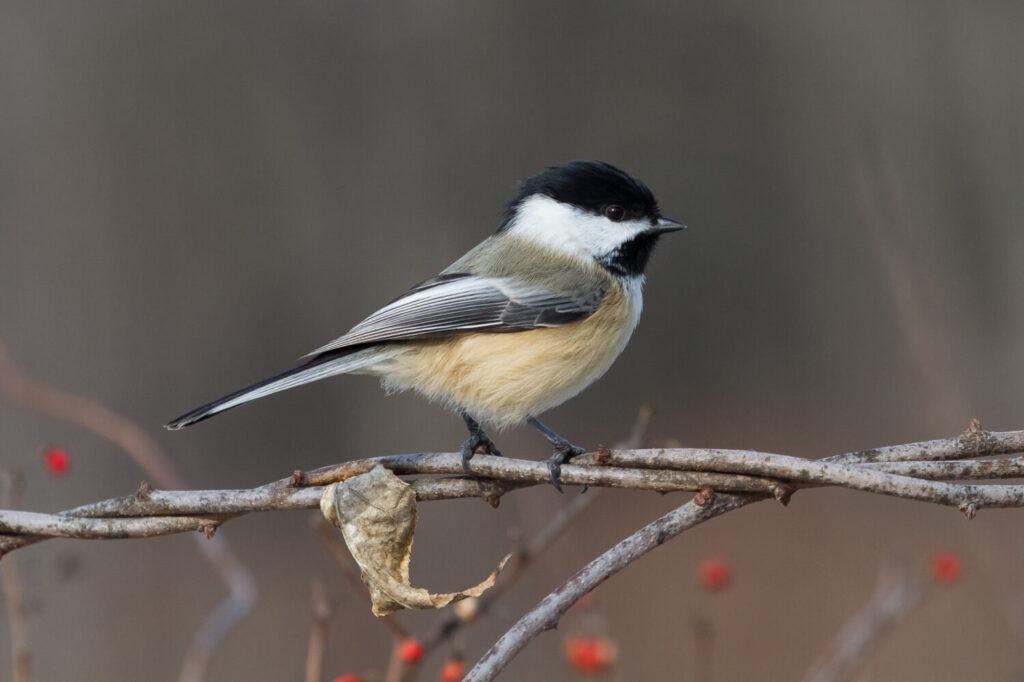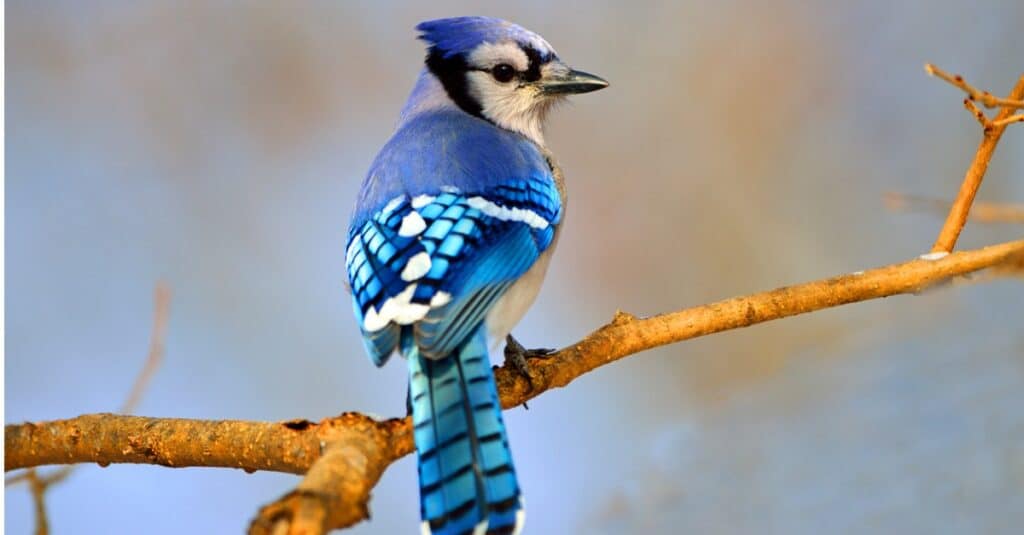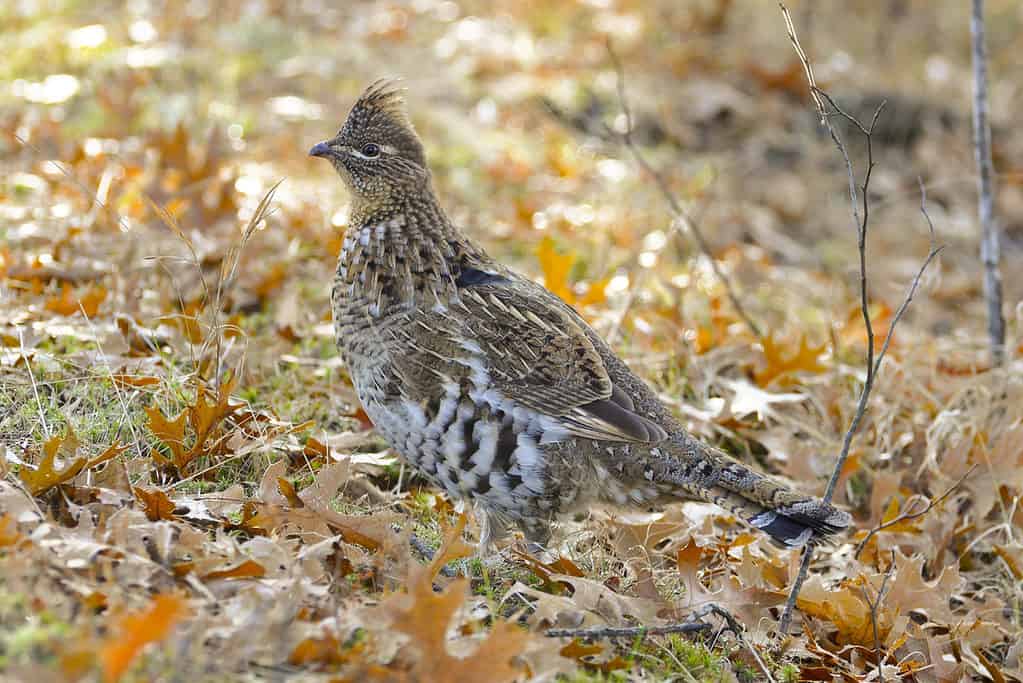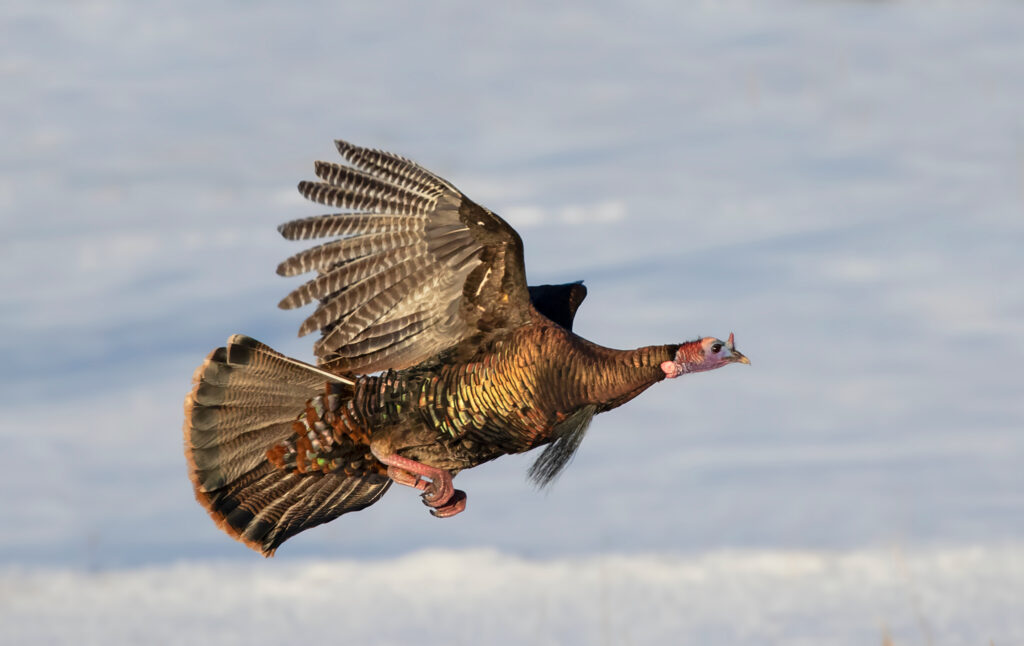Vermont is home to many non-migratory birds that stay in the state through the winter. A few species also migrate to Vermont in the winter but may not stay during the warmer months.
The non-migratory birds in Vermont are very similar to the non-migratory species in the surrounding states. In fact, some of these, like Crows and Blue Jays, are found throughout much of the United States and do not usually migrate in any region.
Here’s a list of the most prominent birds that spend their winters in Vermont.
1. Black-capped Chickadee

These chickadees have a very unique coloration that makes them easy to identify. They’re masters at foraging, so you’ll often see them hopping around in the branches and on the ground.
©Paul Roedding/Shutterstock.com
These little songbirds are easy to identify in the winter due to their black “cap” and smaller size. They are one of the smallest birds in Vermont that don’t move to warmer pastures during the winter months. You can find them in practically all areas, including woodlands, gardens, and even urban parks.
These birds are very good at foraging food for the winter, which is how they can survive in this colder state. They eat seeds from trees and grasses and tend to be regular visitors to bird feeders.
2. Blue Jays

You’ll see Blue Jays easiest during the winter months, when their flash of blue is easy to spot between the bare branches.
©iStock.com/BrianEKushner
Blue Jays are a member of the Corvid family, making them related to Crows and Ravens. They are very intelligent, and their wisdom is a big part of why they can survive through the winter in Vermont.
They are masters at copying the cries of other birds. In fact, it isn’t odd to hear them copy the sound of a hawk near a bird feeder to send the other birds flying – and give them free rein of the food.
While these birds stick around in Vermont throughout the whole year, they spend much of their time in the trees. Therefore, they’re easiest to spot in the winter when most of the trees are bare.
3. Common Raven

Known for their black, glossy feathers, ravens are some of the largest birds you’ll see during wintertime in Vermont.
©Jessica Guo/iStock via Getty Images
Ravens are exceptionally large, intelligent birds that you probably notice throughout the year in Vermont. They do not typically migrate through the winter, though individual birds have been known to travel quite a bit during the cooler months. Their ranges may shift, as well, as they tend to be less territorial outside of breeding season.
You’ll find these birds throughout many areas, including mountains and cities. They’re very adaptable thanks to their intelligence, allowing them to live practically anywhere. As scavengers, they’ll eat just about anything they can get their beaks on.
4. Pileated Woodpecker

These woodpeckers are
huge. Until you see one up close, it’s easy to underestimate just how large these birds can get.
©Vlad G/Shutterstock.com
The pileated woodpecker is the largest woodpecker in North America. Their large black body and redhead make them easy to identify, especially in the winter when they’re easy to spot through the bare branches.
These birds are known for their impressive excavation skills. They make a hole in dead trees each year to nest in. They only use each hole once, but other birds often use them after they are gone. Therefore, they’re a key part of the lifecycle of many birds.
Their loud, drumming call can be heard for miles, especially in the dead of winter.
5. Ruffed Grouse

Ruffed grouse blend in well with the leaves that cover the forest floor in the fall and winter months. Their camouflage makes them difficult to see.
©iStock.com/SteveOehlenschlager
These ground-dwelling birds are not good at flying, making it impossible to migrate. However, they are luckily very adept at surviving in the winter. They are exceptionally well-camouflaged, so don’t be surprised if you don’t see many of these birds.
They may be very nearby, but that doesn’t mean that you’ll notice them.
6. Wild Turkey

Turkeys can fly for a short distance of around a quarter-mile at a time. However, they do not use their flying skills to migrate.
©Jim Cumming/Shutterstock.com
Wild turkeys also cannot fly. Therefore, it is impossible for them to migrate any meaningful distance. Therefore, they stay put in the winter, foraging seeds from underneath the snow.
Not too long ago, these birds were extinct in the state due to overhunting and habitat loss. However, they have been introduced over the last few years and are becoming more and more common. Seeing these birds wandering around on a cool winter’s day is no longer considered odd.
The photo featured at the top of this post is © iStock.com/steverobertsphotography
Thank you for reading! Have some feedback for us? Contact the AZ Animals editorial team.






